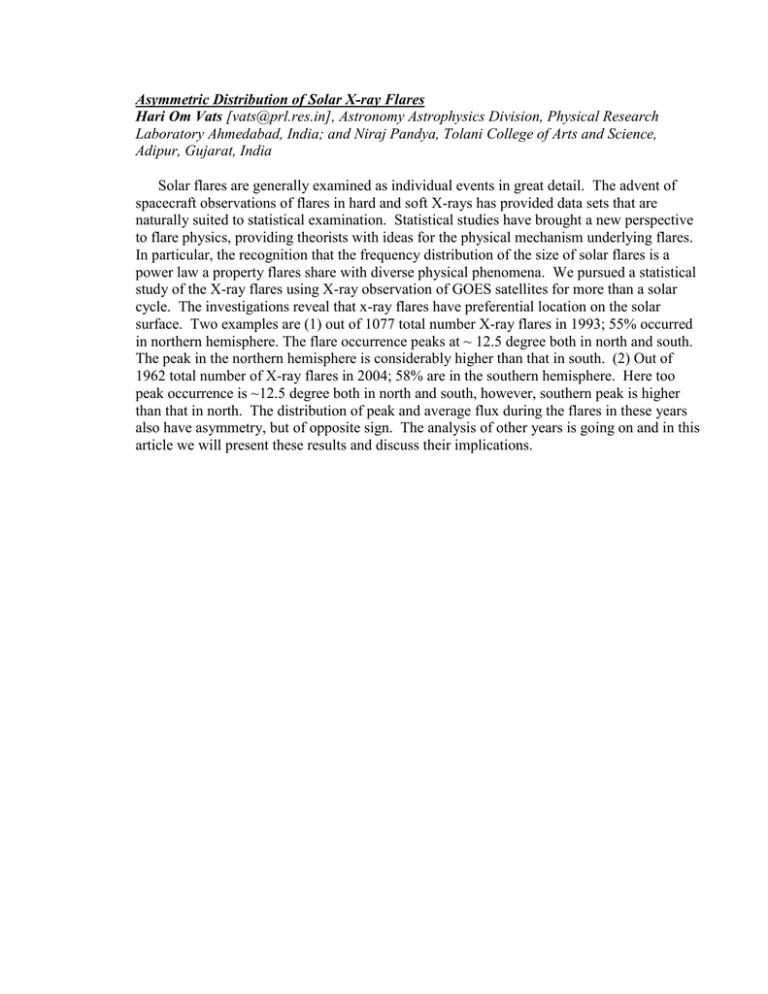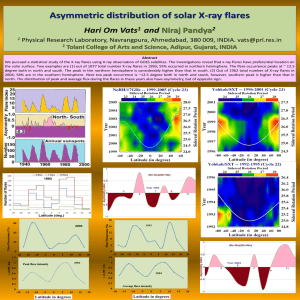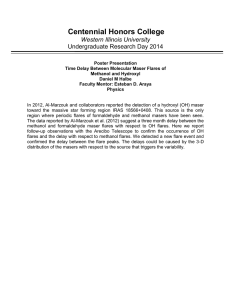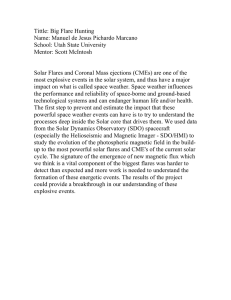Asymmetric Distribution of Solar X-ray Flares Hari Om Vats Adipur, Gujarat, India
advertisement

Asymmetric Distribution of Solar X-ray Flares Hari Om Vats [vats@prl.res.in], Astronomy Astrophysics Division, Physical Research Laboratory Ahmedabad, India; and Niraj Pandya, Tolani College of Arts and Science, Adipur, Gujarat, India Solar flares are generally examined as individual events in great detail. The advent of spacecraft observations of flares in hard and soft X-rays has provided data sets that are naturally suited to statistical examination. Statistical studies have brought a new perspective to flare physics, providing theorists with ideas for the physical mechanism underlying flares. In particular, the recognition that the frequency distribution of the size of solar flares is a power law a property flares share with diverse physical phenomena. We pursued a statistical study of the X-ray flares using X-ray observation of GOES satellites for more than a solar cycle. The investigations reveal that x-ray flares have preferential location on the solar surface. Two examples are (1) out of 1077 total number X-ray flares in 1993; 55% occurred in northern hemisphere. The flare occurrence peaks at ~ 12.5 degree both in north and south. The peak in the northern hemisphere is considerably higher than that in south. (2) Out of 1962 total number of X-ray flares in 2004; 58% are in the southern hemisphere. Here too peak occurrence is ~12.5 degree both in north and south, however, southern peak is higher than that in north. The distribution of peak and average flux during the flares in these years also have asymmetry, but of opposite sign. The analysis of other years is going on and in this article we will present these results and discuss their implications.






